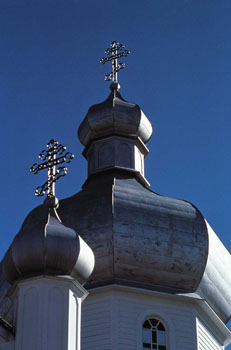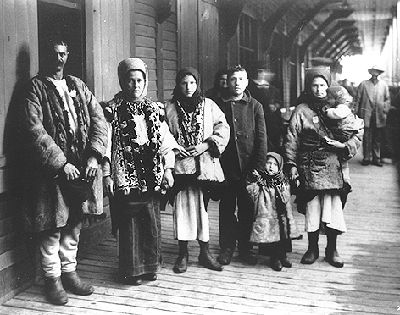The Ukrainian Cultural Heritage Village is a living history site, located 50 km east of Edmonton, Alberta, on the Yellowhead Highway near Elk Island National Park. The Ukrainian Cultural Heritage Village was founded in 1971 to interpret the history of Ukrainian settlement in east-central Alberta. The village was acquired by the province as a Historic Site in 1975.
Ukrainian immigration in the Prairies
The first Ukrainian immigrants settled northeast of Edmonton after 1892. Most came from Galicia and Bukovyna in what is now the western Ukraine, and by 1930 about 250 000 people had left Ukraine to settle in Canada. Although other bloc settlements were established in Saskatchewan and Manitoba and elsewhere in Alberta, the settlement near Edmonton was the largest, eventually covering about 8000 km2.
A living history museum
The village tells the story of this area using "first person animation". Site staff recreate the everyday lives of actual people who lived on the farms and in the towns of rural Alberta before 1930. The site incorporates over 30 historic buildings and other structures into three thematic areas: a townsite, a rural community and several farmsteads. Buildings are meticulously restored and furnished as they would have been in the 1920s. The site is open to the public from mid-May to early September. It is also open on a limited basis and for special events throughout the rest of the year.

 Share on Facebook
Share on Facebook Share on X
Share on X Share by Email
Share by Email Share on Google Classroom
Share on Google Classroom




